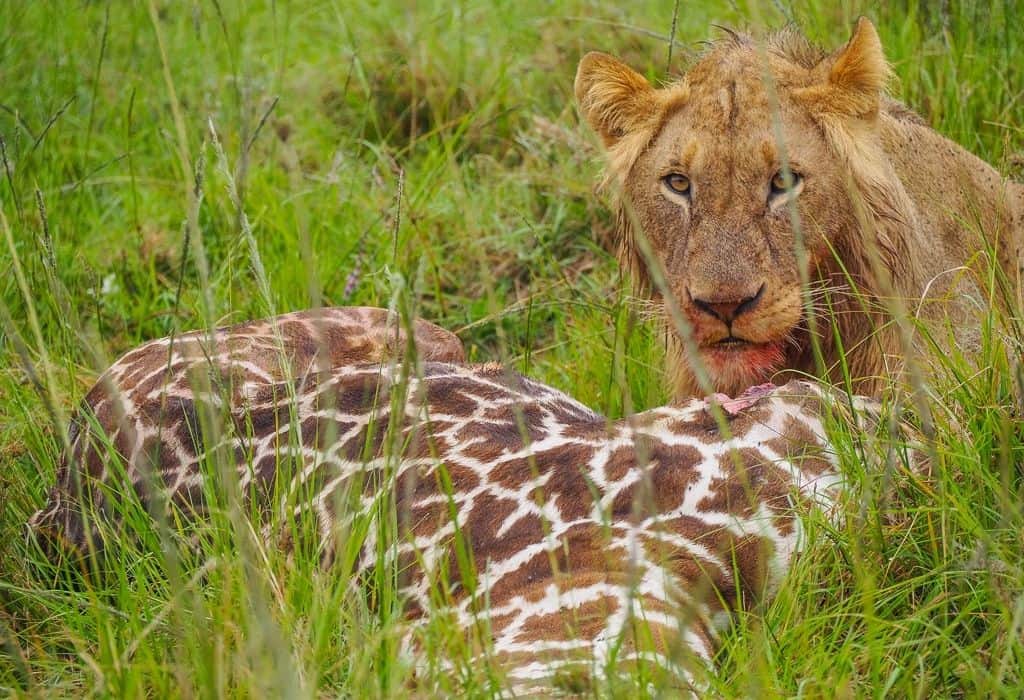Going on a safari in the Masai Mara National Reserve in Kenya is an incredible experience that should be on everyone’s Africa bucket list.
The Masai Mara (or just Mara for short) is one of the world’s most famous safari destinations, bordering and within the same ecosystem as the Serengeti National Park in Tanzania. Animals move freely between the two, including the annual wildebeest migration.
So here’s the Helen in Wonderlust guide (with some help from my lovely friend Laura) to a Masai Mara safari to help you plan and have an incredible trip!
Please Note: Some of the links in this post are affiliate links, which will earn me a small commission at no extra cost to you. Affiliate sales help with the running costs of this site, so thank you for your support!
Planning a Safari in the Masai Mara – Everything You Need to Know
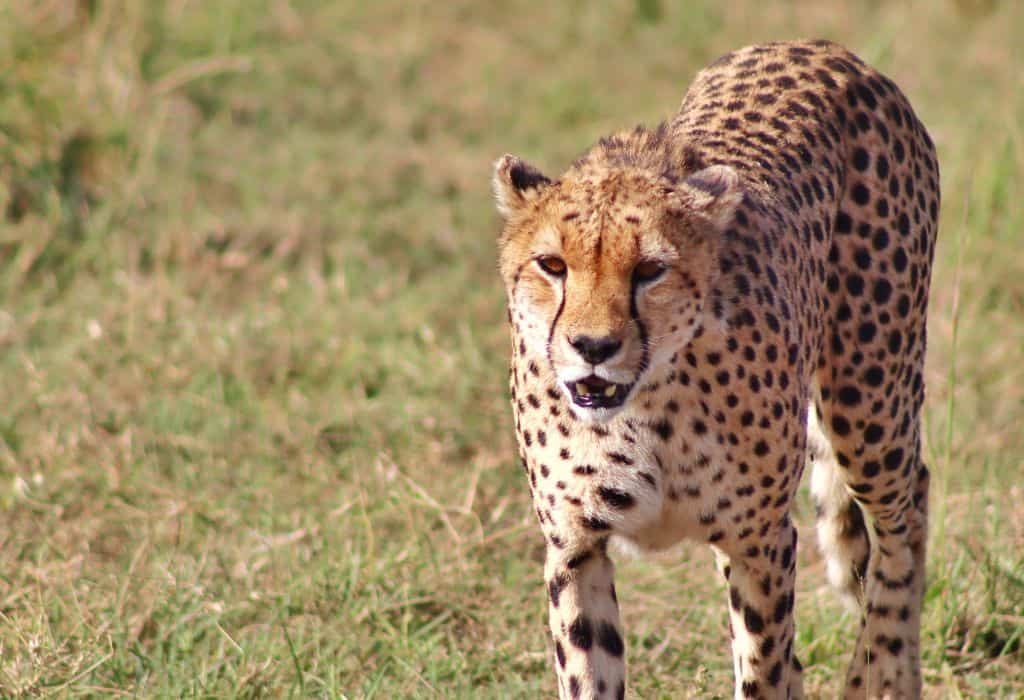
Is the Masai Mara Worth Visiting?
The Masai Mara is one of the most famous and popular safari destinations in the world. I love taking my Kenya & Tanzania group tours here and it’s always a major highlight of the trip.
For me, the Masai Mara is the perfect safari destination. It feels very ‘wild’, but is still accessible, meaning you can travel to the Masai Mara, even if you’re on a budget.
Going on safari in Masai Mara, you will have a chance of seeing the ‘Big Five’ in one day, as well as tons of other animals. It’s quite rare to see a black rhino in the main part of the park, but I have seen them in the Mara Triangle a couple of times.
If you have additional time, you can also combine your trip to the Masai Mara with other game reserves in Kenya, such as Lake Nakuru National Park and Hell’s Gate National Park and/or Amboseli National Park, and Tsavo National Park.
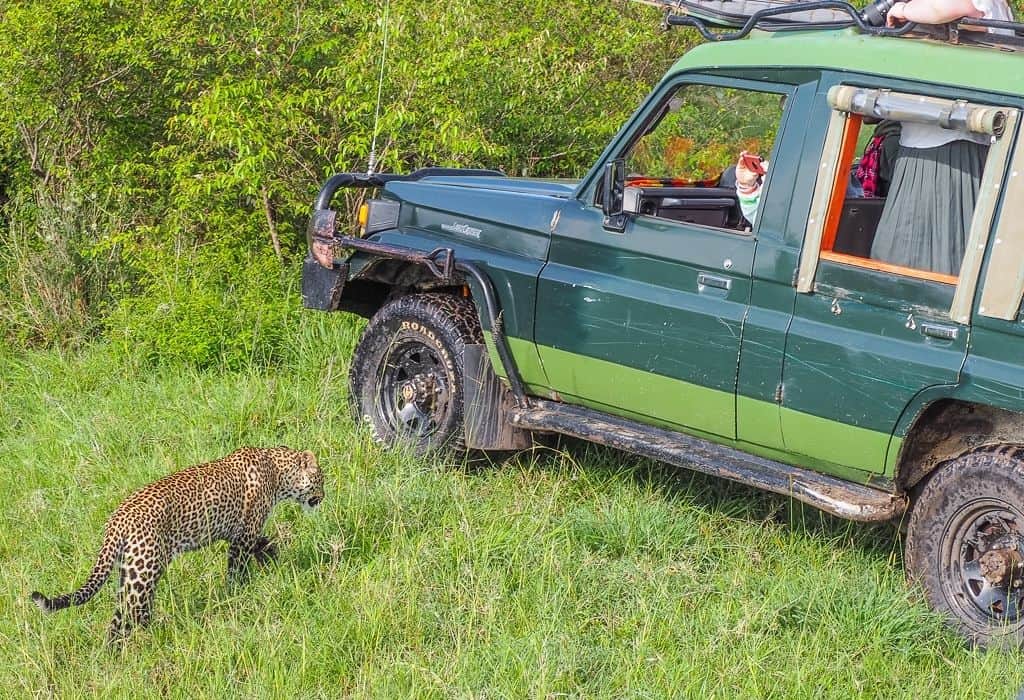
What is the Difference Between the Masai Mara National Reserve, the Mara Triangle and the Mara Conservancies?
The Masai Mara is made up of Maasai Mara National Reserve, the Mara Triangle, and several smaller conservancies. The main Masai Mara National Reserve is managed by the Narok County Government and is around 1000 km², it is separated from the smaller, privately managed Mara Triangle, by the Mara River.
The main reserve has four main entry gates – Oloolaimutia, Sekenani, Talek, and Musiara and the Mara Triangle’s main entry gate is Oloololo. Entry gates to both the main reserve and the Mara Triangle are open from 6am to 6.30pm and if you have a valid entry ticket to one you can cross between the two via the Purungat Bridge gate over Mara River and game drive on both sides at no extra cost (park fees are valid for 24 hours at a time – see below).
Night game drives however are not permitted in either of these areas, even if you are staying inside and you must be back to your lodge or camp by 7pm.
Surrounding the main reserve are several private conservancies including Naboisho, Olkinyei, Olderkesi, Bushtops, and Olare Orok. Each one sets its own conservancy fees which are usually higher than the main reserve and the Mara Triangle.
You must also be a resident guest staying at one of the camps within that conservancy in order to enter and only game drives with the camp vehicles are permitted, self-driving is not allowed. This limits the number of tourists and vehicles inside the conservancy and reduces the pressure on the wildlife.
Other activities whilst on safari in Masai Mara conservancies include night game drives, walking safaris, and horse riding, which are not possible in the main reserve or Mara Triangle. If you are staying in a private conservancy you can still be taken on a day trip to the main reserve if you wish, you will just need to pay the additional park fees to enter the reserve on top of your conservancy fees.
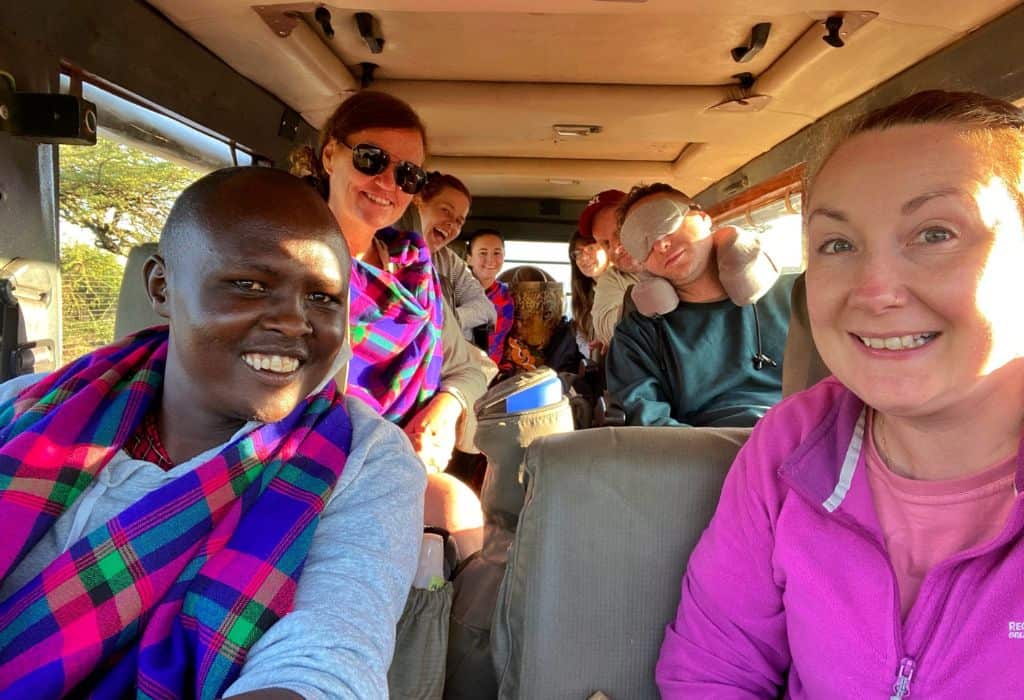
How Do You Get to Masai Mara?
There are lots of ways to go on a Masai Mara safari and different ways to get there too.
By Safari Car
If you’ve organised a safari package, transfers from Nairobi (or wherever you started) are usually included. From Nairobi, the drive time is approx. 5 – 6 hours. Safari vehicles are usually either safari tour vans (minibuses) or 4×4 Land Cruisers – both with pop-up tops or roof hatches for game viewing.
In Your Own Car
You can drive yourself to the Maasai Mara, but, to be allowed into the park, you will need a high-clearance 4×4 car. A ‘normal’ car won’t work and you also won’t really be able to see much! The roads inside the park aren’t paved like they are in some other places.
The most popular park entrance if coming from Nairobi is the Sekenani Main Gate, as it is tarmac all the way. But there are other gates around the park if you are coming in from another direction or staying in another part of the park.
There are no signposts inside the Maasai Mara which makes it very difficult to navigate yourself if you do not know the area. So if you opt to self-drive to the park, you could consider taking game drives with your lodge.
Or if you really want to drive yourself on safari, maybe hire a local Maasai guide from your camp/lodge for the day to help you navigate and have a better game viewing experience.
The last major town between Nairobi and the Maasai Mara is Narok, so if you want any supplies and to fill up with fuel this is the best place. The Maasai Mara gates open at 6am in the morning and close at 6.30pm in the evening.
If you’re staying in a private conservancy, you usually can’t take your car in – they expect you to fly in, use one of their transfers from Nairobi or park your car somewhere outside the conservancy and take a transfer in.
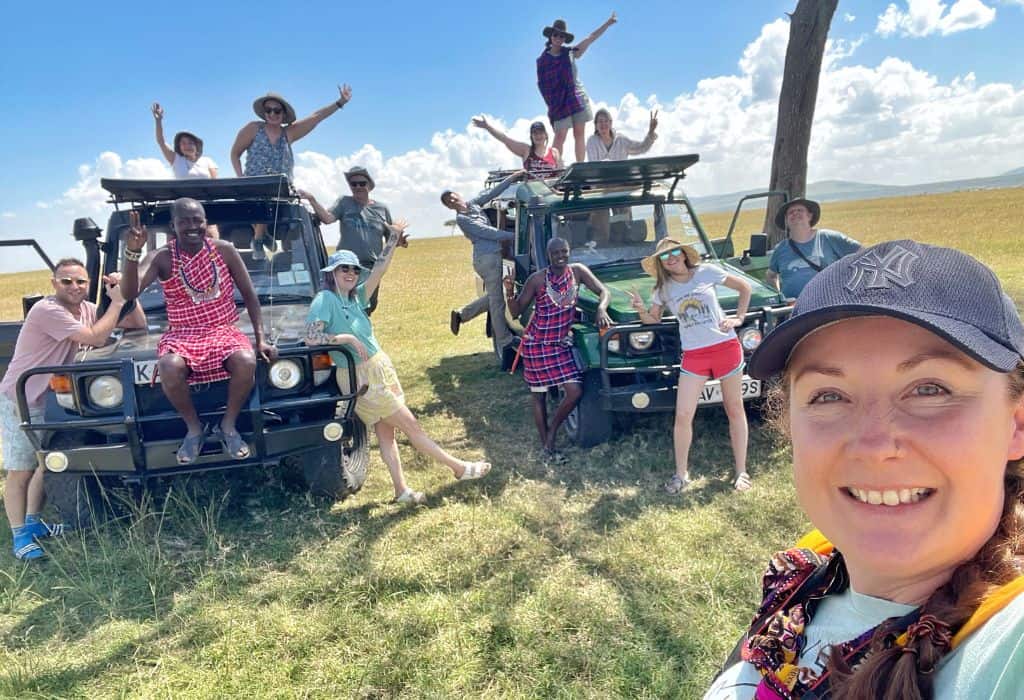
Public Transport from Nairobi
You can get public transport (14 seater matatus or a coach) from Nairobi to Narok, then change at Narok and get a ‘probox’ (shared local taxi) to Sekenani, a town just outside the gate.
You will need to head to the Nyama Kima area of Nairobi CBD to get the local transport. Try to get there as early as possible (around 8 – 9am at the latest) as delays are common on Kenyan roads and you don’t want to find yourself travelling on the roads after dark!
You can ask your accommodation to pick you up from Sekenani. It’s a bit of a faff changing bus, but a good option for backpackers looking for a budget trip to the Maasai Mara.
If you stay at The Pink Container (see below), my friends Laura & Moses’ place on Kobi Farm, they offer a complimentary pick-up and drop-off at Nkoilale township, just before Sekenani gate, for guests arriving with public transport.
Bus from Elsewhere
The same principle applies if coming from elsewhere (ie. Lake Victoria side). Just be aware that there is no public transport through the reserve. If you are coming from Lake Victoria with public transport but staying in the reserve or in Sekenani (on the other side), you will need to stop in Mara Rianta and get a private transfer across the reserve (which could be very expensive).
Your accommodation should also be able to give you more information on the best way to reach them!
By Plane
If you want to get to the park quickly or are staying in a remote lodge, flying is probably your best option as it only takes around an hour. If you book a safari package with a high-end lodge, flights may be included.
There are several airstrips inside the park and some lodges have their own airstrip. If you’re booking everything separately, your lodge can advise you on the best airstrip to fly into.
You will need to make sure you have arranged your pick-up from the Mara airstrip in advance otherwise you will be stranded there! Most flights depart from Nairobi’s Domestic Wilson Airport.

How Long to Spend in the Masai Mara?
The minimum number of nights you can realistically spend in the Masai Mara is 2 nights, especially if driving in. If you are time-poor, but money-rich, you could fly in for a night or even a day, but it would be a pretty long, rushed and tiring day.
I like to spend 3 nights on a Masai Mara safari, with 1 full day on safari and 1 day doing other activities, like visiting the Maasai tribe. But you could easily spend longer if you wanted.

When is the Best Time to Go on a Masai Mara Safari?
The best time to go on a Masai Mara safari is in the cool, dry months, between June and October. This also usually coincides with the annual migration, and the high (most expensive) season.
Each year, around late July, 1.5 million wildebeest (and zebras) make the journey from the Serengeti to the Masai Mara looking for food and fresh grasses. During this time you may be lucky enough to see the animals crossing the Mara River in their masses.
I’ve seen a river crossing before and it was pretty cool. I’ve also waited for ages, hoping to see a crossing and then nothing much happens. It’s the luck of the draw, and obviously, the longer you spend in the Mara, the more likely it is to see a crossing, but in my opinion, a safari in Masai Mara is awesome, whether you see the migration or not.
Another good time is December to February when it’s usually hot with occasional rain. The most expensive times are usually late June to October and around Christmas. Late May – June and November early December are what you would call shoulder season when prices are lower but the weather is reasonably ok and you may be lucky and get little or no rain.
The time to avoid is usually March to May which is the heavier rainy season, and some lodges close during this time. Saying all that, with global warming, the rains and the migration are becoming increasingly more unpredictable. These days it can rain in the dry season and there can be a drought in the rainy season, which means the migration can arrive early or late.
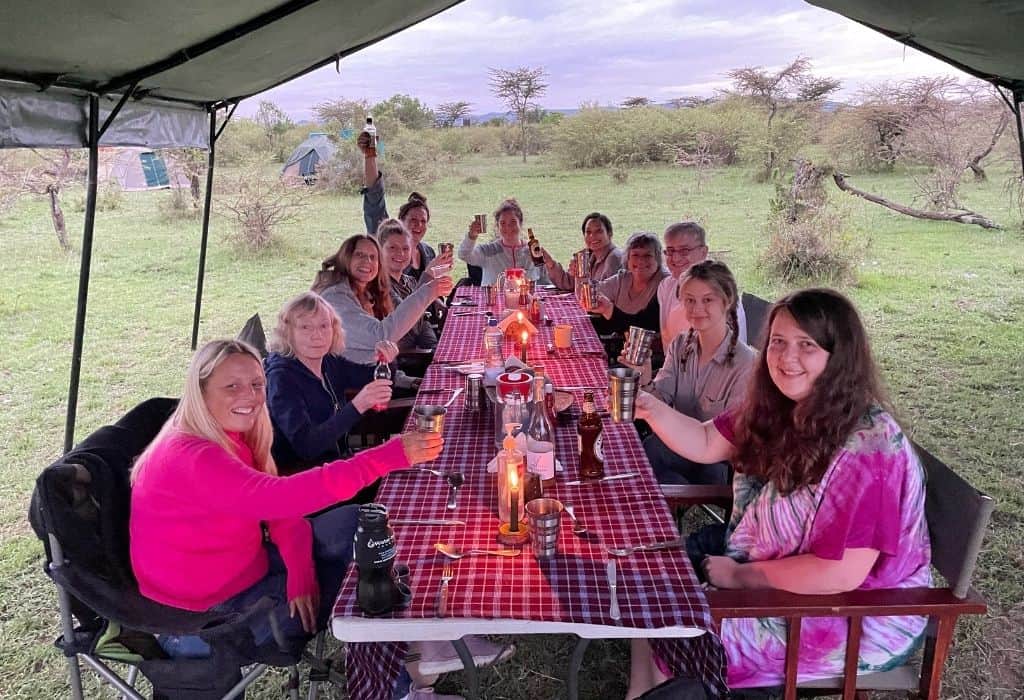
Where to Stay on Your Masai Mara Safari
There are lots of accommodation options to suit all budgets and preferences, from high-end luxury to wild bush camping. Some inside the main reserve, some inside the Mara Triangle, some inside the private conservancies and many outside the reserve gates….

